What is Cloissonism? Learn About This Post-Impressionist Art Style
4 min read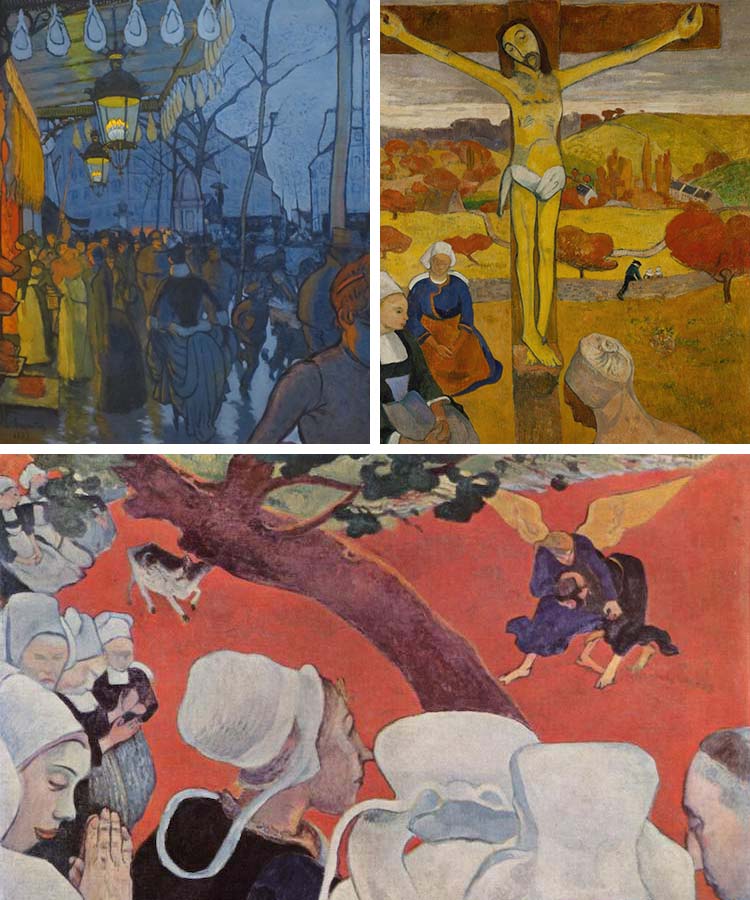
The 19th-century was a time of significant change in the art world. In the 1870s, Impressionists rejected the beaux-arts (“fine arts”) in favor of depictions of fleeting moments inspired by light. This innovative style eventually made way for its successor, Post-Impressionism, which found its roots in color rather than light. One of the significant styles to emerge from this art movement is Cloisonnism.
Created by Emile Bernard, Louis Anquetin, and Paul Gauguin, this style featured bold line art and flat areas of color. The inspiration for this approach came from Japanese woodblock prints and stained glass windows—two formats that favored simplified art. As a result, the art from this style attempted to capture the essence of its subjects in a clear, approachable way.
Scroll down to learn more about Cloisonnism and the artists who helped develop the style.
What is Cloisonnism?
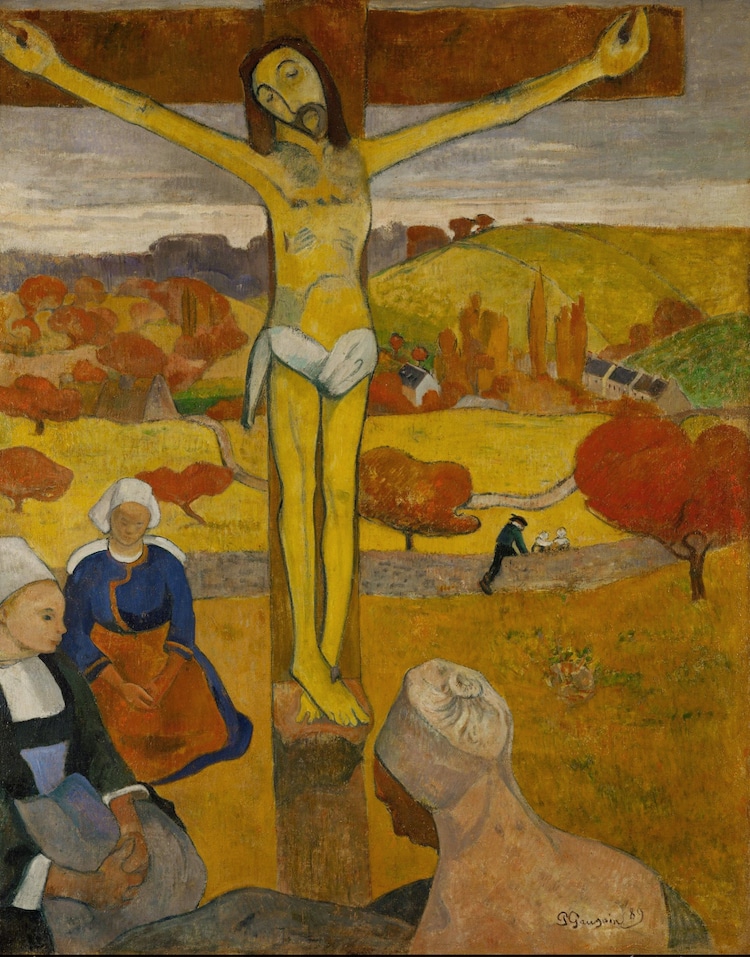
Paul Gauguin, “The Yellow Christ,” 1891 (Photo: Wikimedia Commons, Public domain)
Cloisonnism is a Post-Impressionist style characterized by flat areas of color and dark linework. It was developed by two French artists Émile Bernard and Louis Anquetin, who modeled the style after Japanese woodblock prints (a highly popular collector’s item among artists of the time) and stained glass. Paul Gauguin joined later and produced some of the Cloisonnism’s best-known examples, including The Yellow Christ.
Art critic Édouard Dujardin named the style after the decorative technique cloisonné, which describes metalwork objects that contain colorful glass within wireframes.
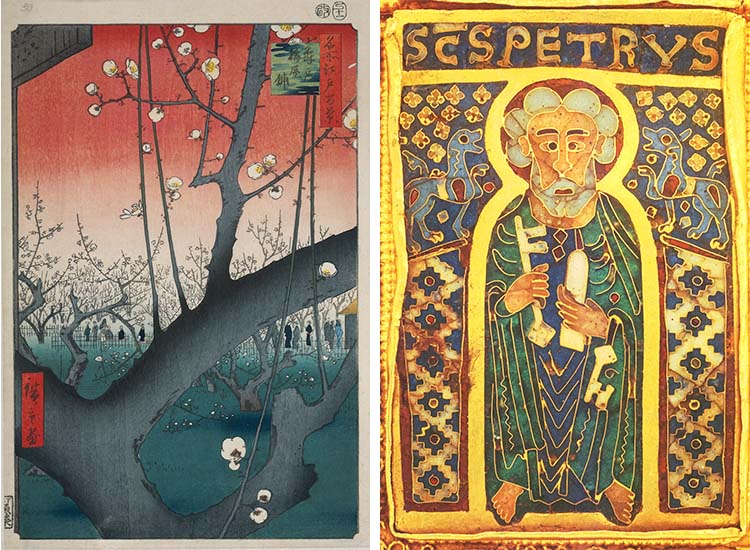
Left: Hiroshige, “The Plum Garden in Kameido,” Edo, print 30, 1857 (Photo: Wikimedia Commons, Public domain)
Right: St. Peter on the Holy Crown of Hungary, 11th Century (Photo: Wikimedia Commons, Public domain)
Characteristics of the Style
Flat areas of color
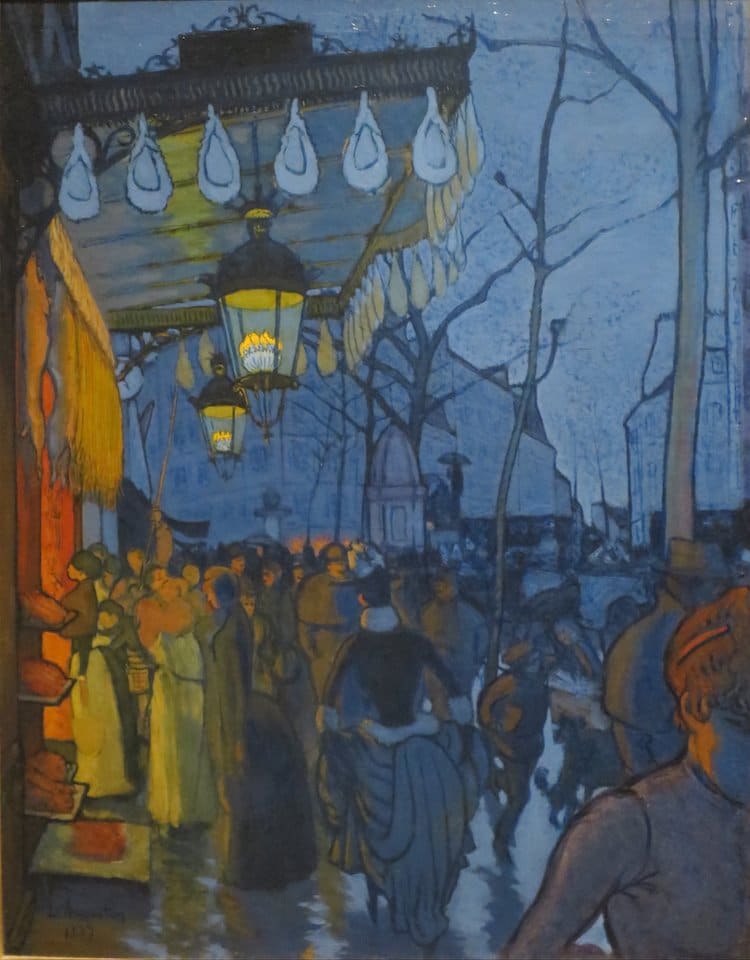
Louis Anquetin, “Avenue de Clichy: Five O’Clock in the Evening,” 1887 (Photo: Wikimedia Commons, Public domain)
Instead of blending colors together to create realistic modeling, Cloisonnist painters preferred to separate their colors into flat areas. The inspiration for this aesthetic largely comes from Japanese woodblock prints, which often utilize a limited color palette and little to no modeling. This idea is considered to be a precursor to other Modernist painting styles.
In Anquetin’s Avenue de Clichy: Five O’Clock in the Evening, he colors the entire background in a uniform shade of blue and distinguishes the forms with dark contours.
Bold line art
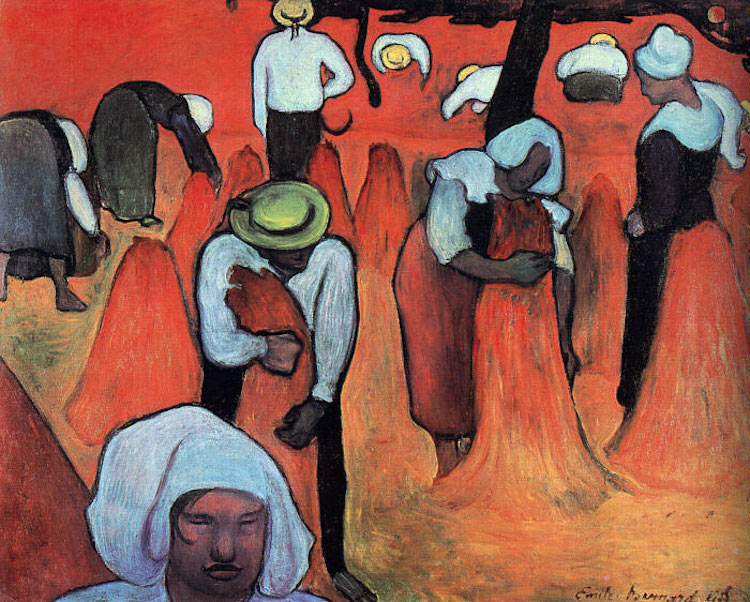
Émile Bernard, “Buckwheat Harvesters,” 1888 (Photo: Wikimedia Commons, Public domain)
Another important characteristic of Cloisonnist painting is the bold line art. While not as prominent in the works of Gauguin (which tend to be more subtle in color and line), Bernard and Anquetin use thick contours to define their forms and emphasize their presence on the canvas. This not only separates the subjects from the oftentimes blank backgrounds, but it also gives the impression of a flatter, more simplistic figure.
Distorted perspective

Paul Gauguin, “The Vision After the Sermon (Jacob Wrestling with an Angel),” 1888 (Photo: Wikimedia Commons, Public domain)
Many Cloisonnist works also feature distorted perspectives. Instead of creating a realistic composition with distinct foreground and background (for instance) Gauguin and Bernard would arrange their figures in a way that resembles the flattened appearance of tapestries.
Important Artists
Émile Bernard
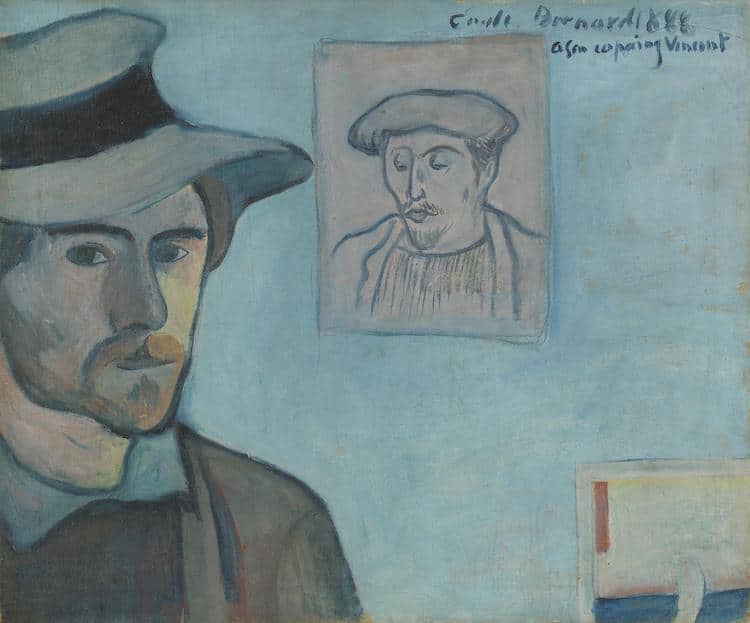
Émile Bernard, “Self-Portrait with a Portrait of Gauguin,” 1888 (Photo: Wikimedia Commons, Public domain)
French artist Émile Bernard (1868 – 1941) was a prominent Post-Impressionist painter who is best known for his work in the late 1880s and 90s. Despite his young age at the time, he had clear and original ideas about painting, describing his desire to make art that was founded in simplicity, not individuality, and accessible to everyone.
Bernard had friendships with many other Post-Impressionists, including Vincent van Gogh, Henri de Toulouse-Lautrec, Paul Gauguin, and Louis Anquetin. He is credited with creating the Cloisonnist style, which was later developed by both Anquetin and Gauguin.
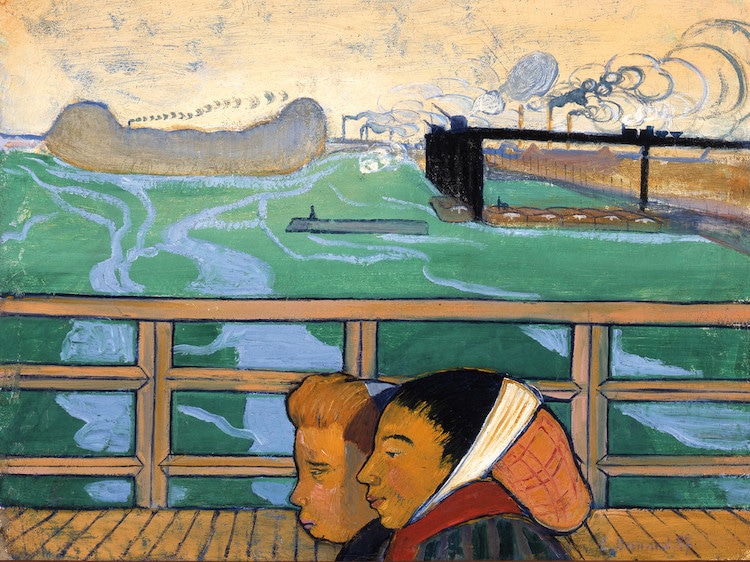
Émile Bernard, “Two Women on the Bridge of Asnières,” 1887 (Photo: Wikimedia Commons, Public domain)
Paul Gauguin (1848 – 1903)
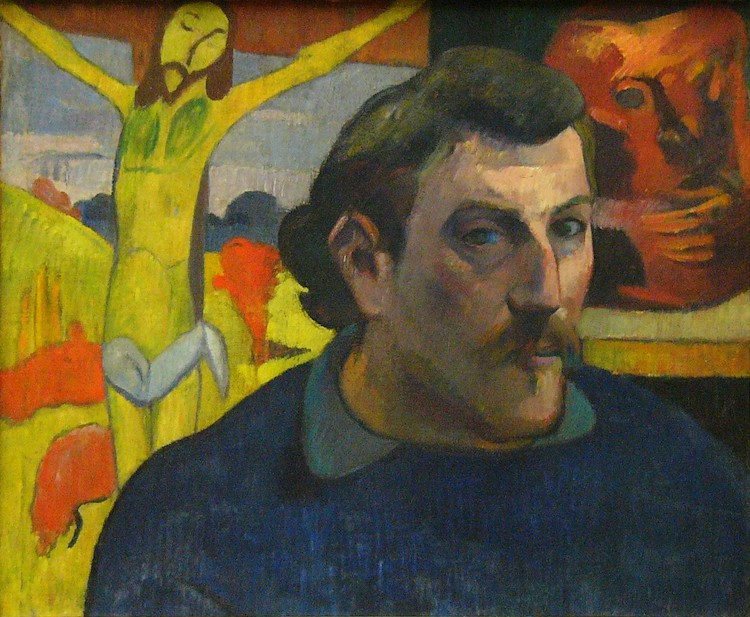
Paul Gauguin, “Portrait of the Artist With the Yellow Christ,” 1891 (Photo: Wikimedia Commons, Public domain)
As one of the most important figures in modern art, Paul Gauguin (1848 – 1903) was pivotal in the development of the Post-Impressionist art movement. His desire to create a pure type of art that captured the essence of his subjects inspired him to join Bernard and Anquetin and adopt the Cloisonnist style.
During this time he produced The Yellow Christ, which depicts Jesus on the cross with three Breton women sitting around him. The simplified color palette and forms make it a key example of the style. He and Bernard would later go on to form Synthetism, a successor to Cloisonnism.
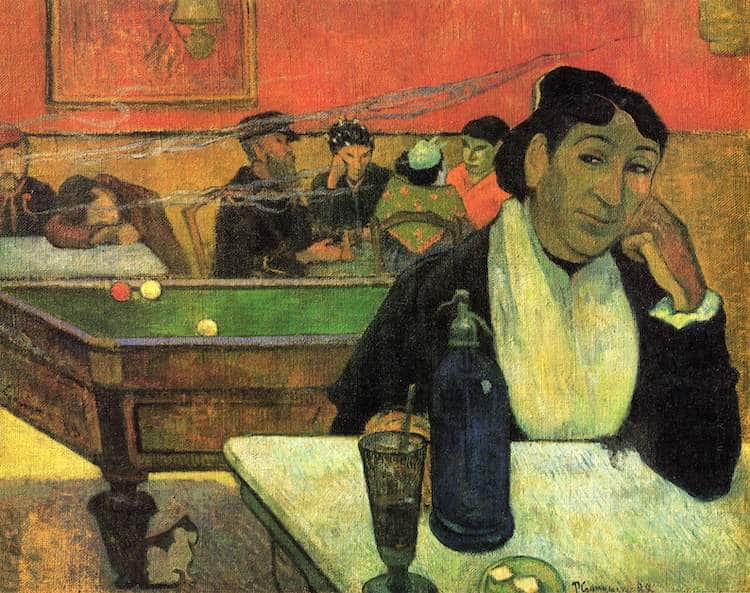
Paul Gauguin, “The Night Cafe, Arles,” 1888 (Photo: Wikimedia Commons, Public domain)
Louis Anquetin
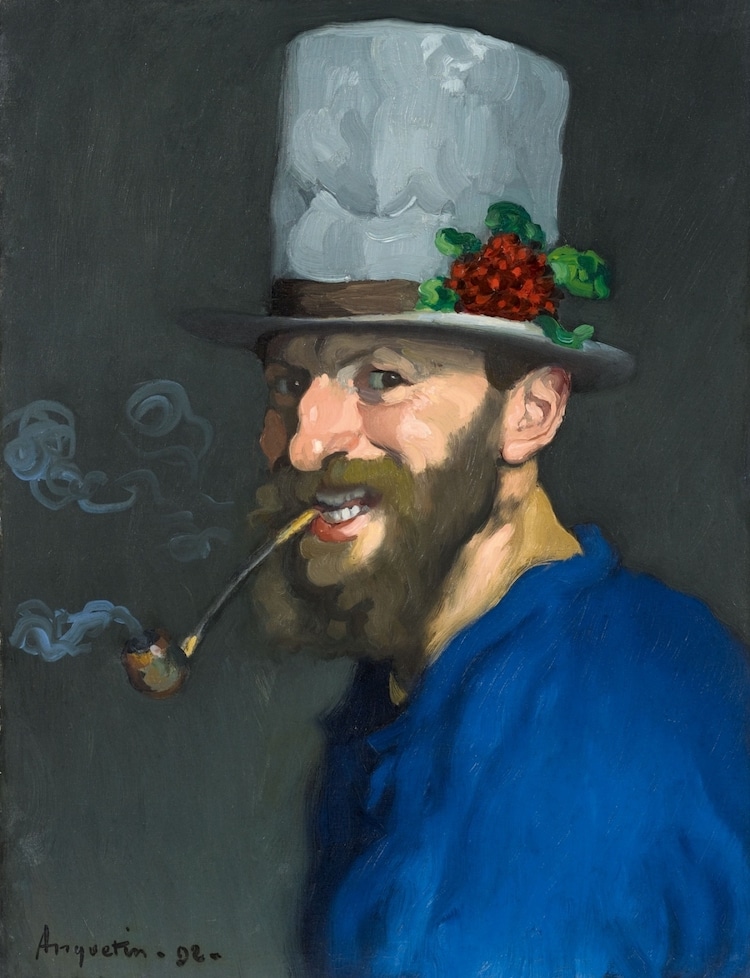
Louis Anquetin, “Self-Portrait with a Pipe,” 1892 (Photo: Wikimedia Commons, Public Domain)
Although he is lesser-known than his contemporaries, Louis Anquetin (1861 – 1932) was an important member of the Post-Impressionist art movement. His work Avenue de Clichy: Five O’Clock in the Evening, is often referred to as a model of the Cloisonnist style’s values, including flat areas of color and dark contour lines. In fact, that same piece is theorized to have been the inspiration for Van Gogh‘s painting Cafe Terrace at Night.
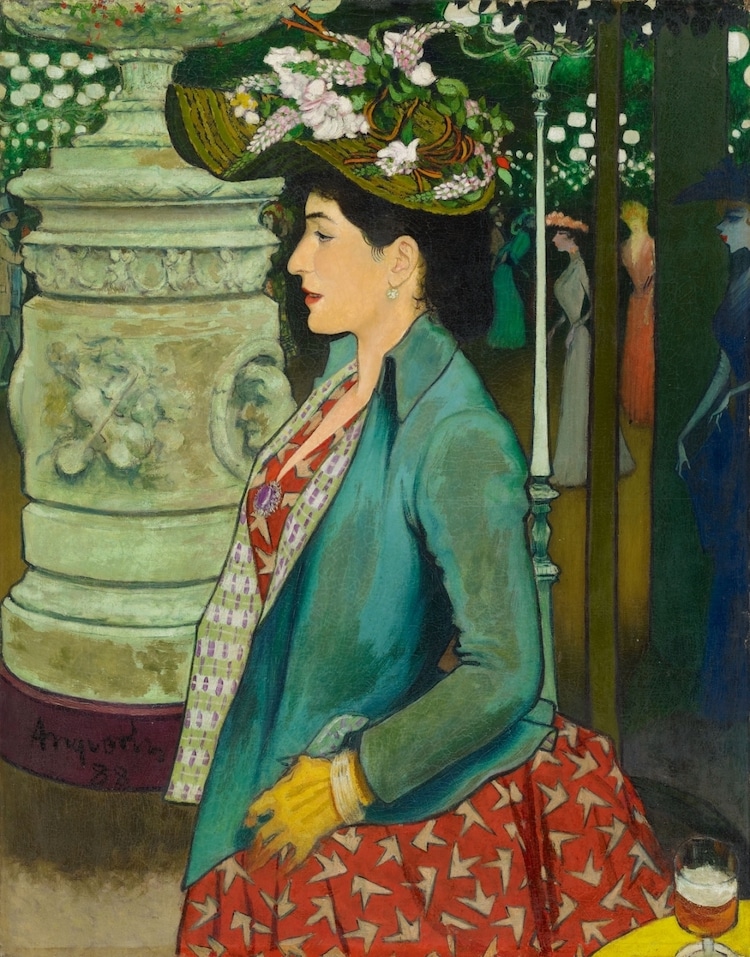
Louis Anquetin, “An Elegant Woman at the Élysée Montmartre,” 1888 (Photo: Wikimedia Commons, Public domain)
Related Articles:
Why Post-Impressionist Painter Paul Cézanne Is Known as the “Father of Modern Art”
6 Fascinating Facts About Post-Impressionist Pioneer Henri de Toulouse-Lautrec
Exploring the Vision and Diverse Styles of Post-Impressionism Pioneers






